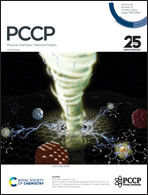Synergetic interfacial conductivity modulation dictating hysteresis evolution in perovskite solar cells under operation†
Abstract
In this work, the configuration of compact TiO2 coating (c-TiO2) interface as electron transport layer (ETL) in giving rise to loss and gain of fill factor (FF) and therefore modulation of hysteresis behavior in perovskite solar cells (PSCs) is investigated. For this purpose, PSCs based on planar compact TiO2 (c-TiO2) as well as a scaffold-based architecture are studied. In the latter case c-TiO2 coats a hydrothermally grown titania nanorod scaffold. The results demonstrate that when c-TiO2 is used in planar configuration, FF considerably improves with prolonged light soaking which is in sharp contrast to what is observed for scaffold-based PSCs. Moreover, higher thickness of planar c-TiO2 is shown to be beneficial for sustaining FF in forward scan. Finally, through studying the intricate interfacial dynamics utilizing electrochemical impedance spectroscopy (EIS), it was concluded that for a PSC under operation, the cumulative effect of conductivity modulation at the perovskite with transport layer interfaces, for their respective charge carriers, determines the loss and gain in performance depending on scan rate, applied bias and prolonged light soaking. This work points towards multiple factors affecting PSC output, which could work either in confluence or against one another depending on the interfacial configuration of transport layers.



 Please wait while we load your content...
Please wait while we load your content...